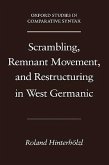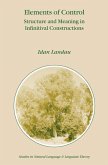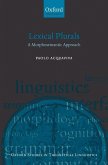This book uses data from English, Mandarin Chinese, and Modern Greek to develop a new theory of control structures that relates them to restructuring and the semantics of the embedding verb. The theory has implications both for clausal structure and for the relationship between form and meaning in natural language.
This book investigates the phenomenon of control structures, configurations in which the subject of the embedded clause is missing and is construed as coreferential with the subject of the embedding clause (e.g. John wanted to leave). It draws on data from English, Mandarin Chinese, and Modern Greek to investigate the relationship that control bears both to restructuring - the phenomenon whereby some apparently biclausal structures behave as though they constitute just one clause - and to the meanings of the embedding predicates that participate in these structures.
This book investigates the phenomenon of control structures, configurations in which the subject of the embedded clause is missing and is construed as coreferential with the subject of the embedding clause (e.g. John wanted to leave). It draws on data from English, Mandarin Chinese, and Modern Greek to investigate the relationship that control bears both to restructuring - the phenomenon whereby some apparently biclausal structures behave as though they constitute just one clause - and to the meanings of the embedding predicates that participate in these structures.








